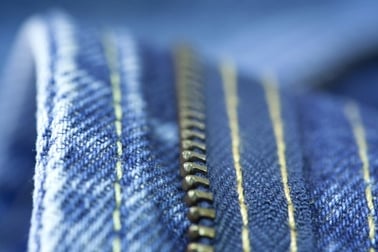Best from InTouch – 2016
As 2016 comes to a close, we’re looking back at some of this year’s best manufacturing and QC content from InTouch. We’ve rounded up a list of the top five articles published on our blog based on their popularity within the manufacturing community.
Join us in looking back at some of the content manufacturers and importers found most helpful and interesting throughout the year.
And from everyone at InTouch, we’d like to wish you and your family a wonderful 2017!
1. 5 Qualities to look for when choosing the right supplier
Choosing suppliers is often one of the most difficult aspects of importing. In fact, a survey of more than 200 manufacturers on our website late this year found that 22 percent of you said “finding the right supplier(s)” was your greatest manufacturing  challenge.
challenge.
Why is this such a concern? Because the supplier you work with can make or break your business. Due diligence at the sourcing stage is vital to ensuring a smooth importing experience. And working with a supplier that isn’t a strong fit for you can lead to production delays, product quality problems, higher costs and other setbacks.
That’s why the author of this article decided to shed some light on five of the most desirable characteristics to seek in a potential supplier, prompting a reflection of the following questions:
- Accountability – Does the supplier take responsibility for their mistakes, or do they habitually point fingers?
- Production capabilities – Can the supplier actually manufacture your product? And how can you be sure?
- Ease of communication – Does the main contact person of the supplier communicate directly and openly? Do they neglect to inform you of important details?
- Cooperation with TPI – Is the supplier open and willing to allow a professional third-party inspection to verify the product?
- Ethics – Does the supplier operate ethically and within generally accepted compliance standards?
Being familiar with these qualities of “good” suppliers can help put you at ease when confronting a long list of potential candidates during your search.
An in-depth podcast interview with the author
Along with the article, you’ll also find a great podcast episode featuring an interview with the author, Client Services Manager Oliver Knack. Within the episode, Oliver and I discuss these five traits to look for in suppliers in more detail. Oliver also offers some real-world examples of problems importers have encountered with their suppliers and how these might have been prevented.
This article and the podcast that follows were well-received by importers struggling with finding the right supplier. If you find yourself among them, be sure to check out the article below:
5 Qualities of a Good Supplier – Oliver Knack
2. How China remains competitive for importers
It’s no secret that there are factors driving manufacturing out of China, namely rising costs. Hourly manufacturing wages in the country have increased by an average of 12 percent year-on-year since 2001. And much lower wages in countries like India and Vietnam have enticed some importers to move operations there.
But don’t discount China just yet. Several key advantages continue to make the Middle Kingdom a competitive manufacturing hub. The author of this article names three major ones:
- Modern infrastructure – China’s extensive network of paved roads, numerous ports and state-of-the-art, high-speed railways make logistics highly efficient.
- Evolving production capabilities – Factories in China have made major strides to improve productivity, such as implementing automation in their facilities.
- A large, educated labor force – With a working population of more than 800 million that’s 96 percent literate, China’s labor force is unmatched.
If these factors don’t convince you, just look at China’s rapid climb up the industrial value chain. The country went from having the reputation of a simple toy and garment producer to being host to a number of high-tech companies, including Tencent, Baidu, Lenovo and DJI—one of the world’s largest developers and manufacturers of drones.
When you look at all the ways China’s leaders have pushed the country forward, is it any wonder how they manage to stay competitive in the manufacturing realm? Click the link below to read the full article:
3 Reasons Why China Remains Competitive for Importers – Chao Wang
3. 6 of the most common quality defects found in garments
Garments are a product type with a lot of room for error when it comes to quality. In fact, there are so many kinds of product defects known to affect garments, we’ve written an entire eBook on how to  look for them during inspection. And reading a full-length article covering all possible garment defects might be more than most importers can stomach. So this article covers the ones garment manufacturers are most likely to face.
look for them during inspection. And reading a full-length article covering all possible garment defects might be more than most importers can stomach. So this article covers the ones garment manufacturers are most likely to face.
The author goes beyond simply naming the defects by including detailed descriptions and actual inspection photos to help you identify and address them. Examples include:
- Broken, skipped or missing stitches
- Untrimmed threads
- Incorrect item dimensions
- Puckering
- Open seams, and
- Incorrect stitch density
You may not become an expert right after reading, but it’s safe to say you’ll be familiar with the QC issues most garment manufacturers encounter daily.
But wait, there’s one more thing… a more comprehensive slideshow of garment defects
If learning about the top six most common garment defects isn’t enough for you, you can flip through a more complete list in the slideshow deck found at the end of the article. The deck breaks down quality defects by cause and offers advice on how to prevent or correct the problems. And of course, more photos show you what to look for when inspecting garments for defects.
This article is a great introduction to quality control for garments and points you in the right direction of more resources on the subject. Be sure to check it out in full in the link below:
Top 6 Most Common Garment Defects – Oliver Knack
4. How effective are factory QC staff at checking your product?
Most people seem to think that every factory has its own team of QC people checking the product as it comes off the line. And generally, they’re right. Most factories do have people dedicated to checking the quality of goods made in the facility.
But those working directly in manufacturing tend to recognize some limitations of relying on a factory’s own QC staff to ensure the product meets customer requirements. The author of this article offers a comprehensive look at why some importers leave inspection to staff at the factory, while others insist on bringing in outside professionals.
Why might an importer forego outside inspection? You may cite limited budget, fear of delays and a high tolerance for quality issues among your reasons. The author addresses these and their validity. But then he reveals the other argument—why most importers choose not to rely on factory staff alone to check their goods, pointing out two main risks:
- Less reliability & biased inspection and
- Limited transparency & reporting
The author is careful to point out that some importers may find that relying on the factory’s own QC staff is adequate. No two importers share the exact same experience with managing product quality. And third-party QC may not be the best option for all.
If you’re looking for a balanced account of the pros and cons of factory self-inspection for any importer, you’ll find this article spot-on:
Why Most Importers Don’t Rely on Factory QC Staff for Inspection – George Huang
5. A brief guide to wood warping for manufacturers
If you manufacture furniture, molding, flooring or any other product commonly made of wood, you’re probably familiar with how wood can warp and cause quality problems. It’s often hard to control how wood behaves during the drying and curing  process. And warping is unforgiving in that there’s not much you can do to fix it once it occurs. Warping can be a very costly issue that manufacturers struggle to mitigate.
process. And warping is unforgiving in that there’s not much you can do to fix it once it occurs. Warping can be a very costly issue that manufacturers struggle to mitigate.
So I thought it was time to write a guide on how to find and address wood warping in manufacturing. You’ll find this article combines not only the experiences from importers of wood products I’ve worked with, but also outside research from other experts in the industry. You’ll learn mainly about the following:
- How to define wood warping and what factors influence the rate of change in moisture content;
- 5 common types of wood warping;
- How wood grain and sawing techniques affect warping;
- Proper ways to store wood to prevent warping;
- How to properly dry or cure wood to limit warping
You’ll also gain more clarity about this problem from tables comparing relative humidity to moisture content, different types of wood warping and how to check for signs of warping during inspection.
For some readers, this may be more than you ever wanted to learn about wood and how it warps. But you’ll appreciate this detailed, but concise, reference if you work directly with wood products. Read the article in full by clicking the link below:
Wood Warping and How to Prevent It – John Niggl
What was your favorite article from InTouch in 2016? Is there any topic you'd like to see covered more often? Let us know in the comments below!







